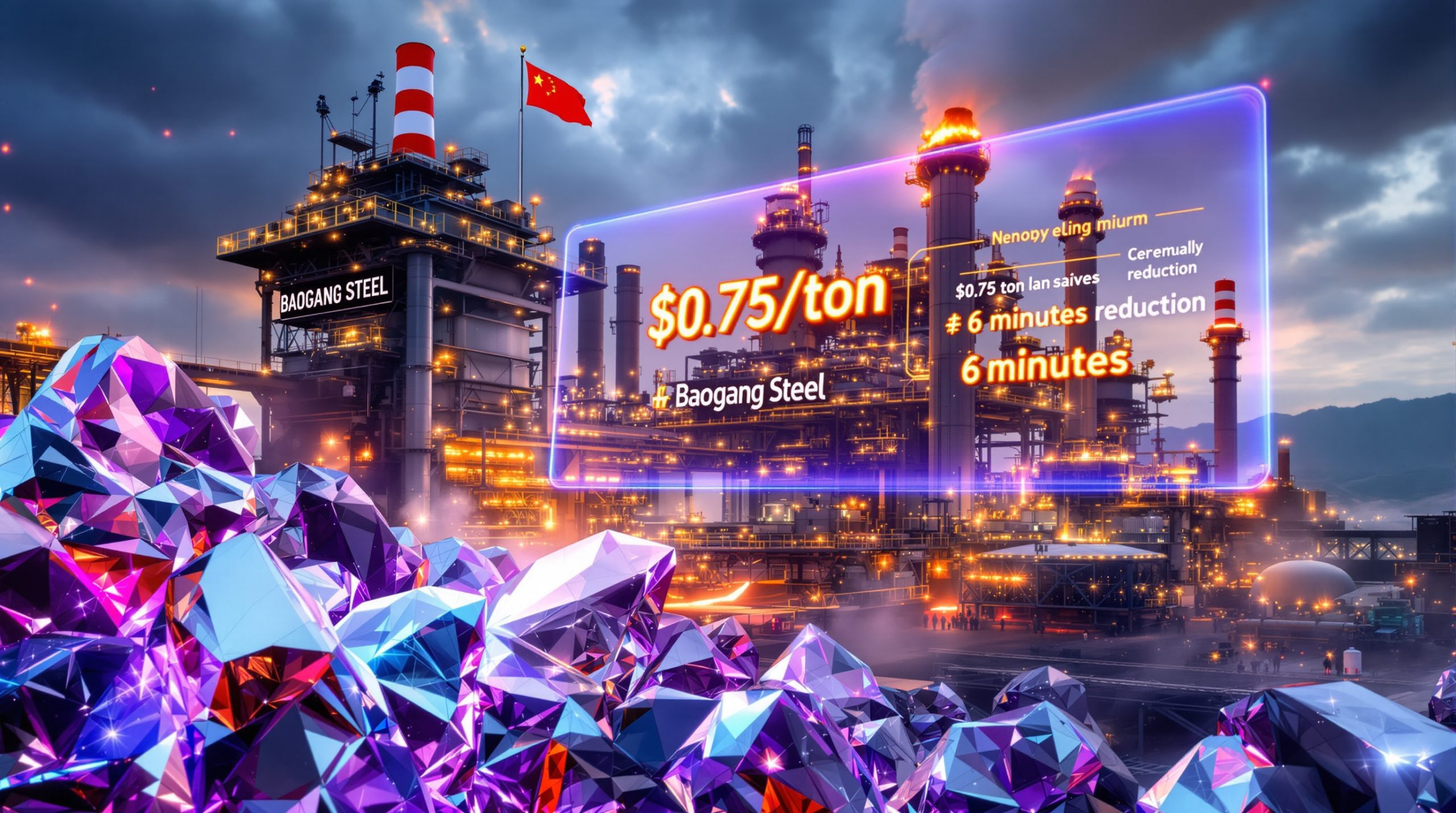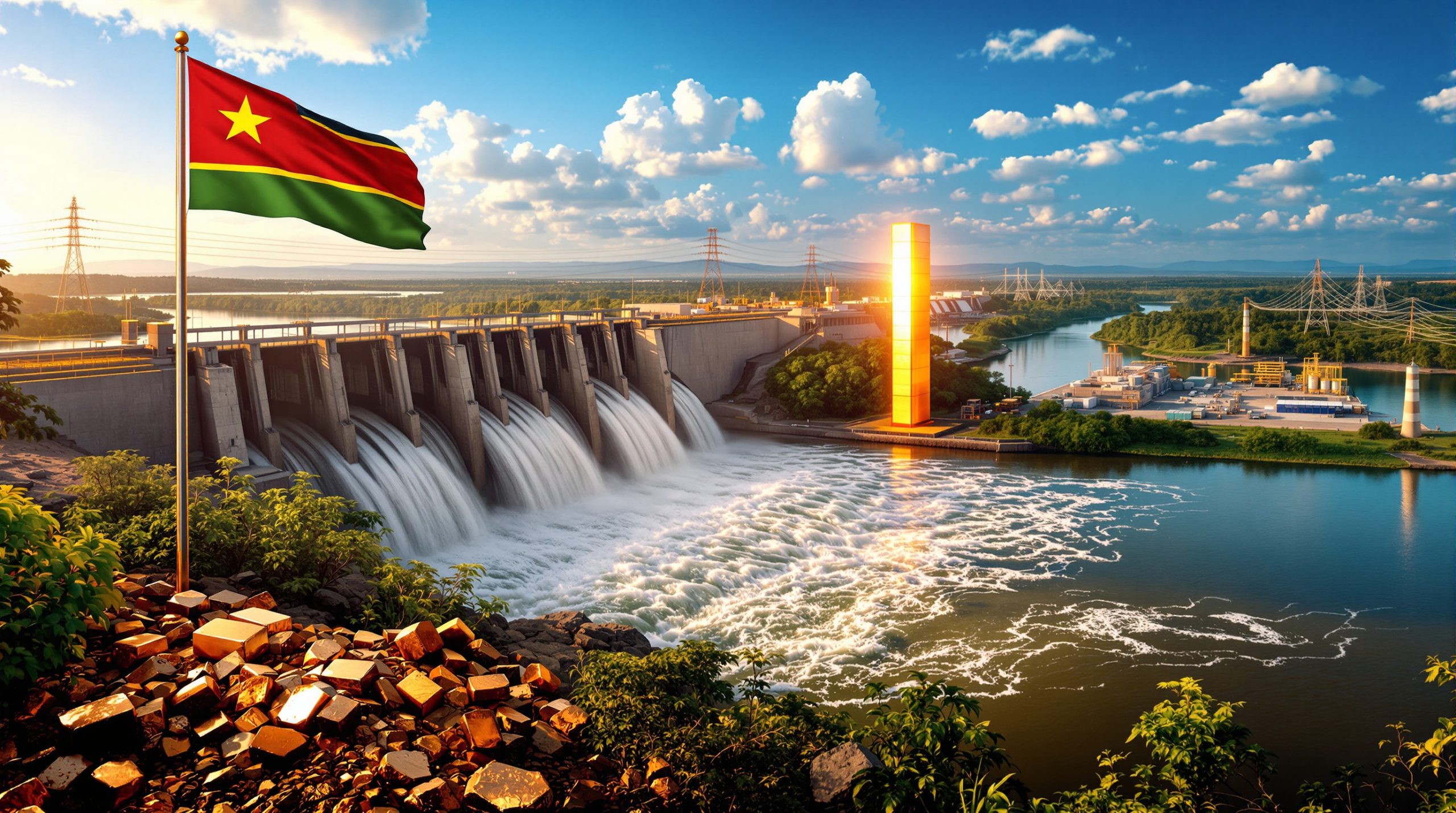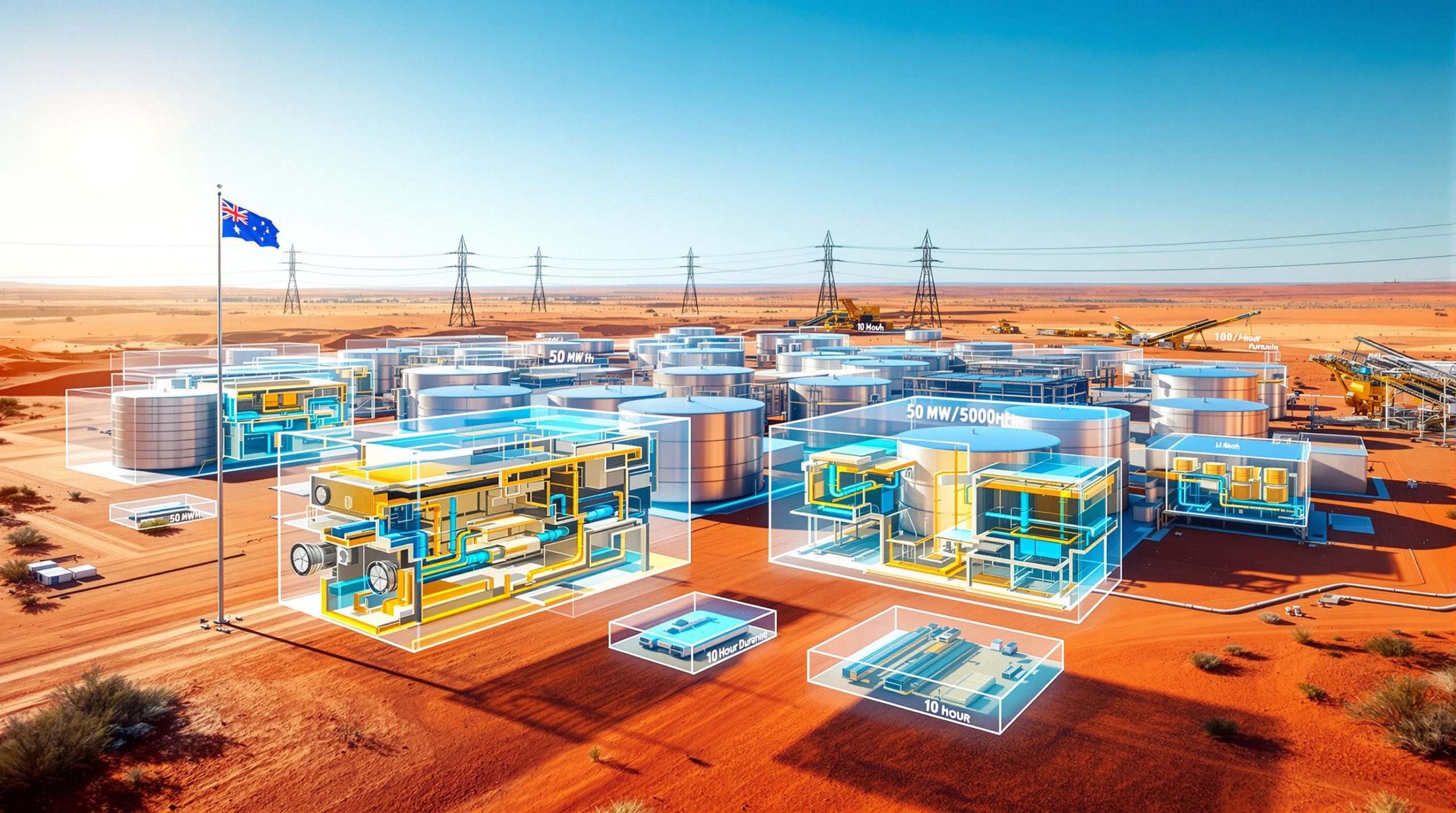The global transition toward renewable energy and electric vehicle adoption has fundamentally altered strategic mineral procurement patterns across Western economies. Traditional supply chains, heavily concentrated in East Asian processing networks, face unprecedented scrutiny as geopolitical tensions intensify and domestic manufacturing capabilities expand. Within this evolving landscape, ionic adsorption clay (IAC) deposits represent a technological paradigm shift that could redefine rare earth element extraction economics and environmental footprints. The Colossus rare earth project in Brazil emerges as a critical test case for whether Western-aligned economies can establish competitive, scalable alternatives to established production centers. Furthermore, this development intersects with broader critical minerals & energy transition initiatives shaping global supply chain strategies.
Unlike conventional hard-rock rare earth operations requiring high-temperature processing and extensive chemical inputs, ionic clay formations permit room-temperature leaching methodologies that dramatically reduce energy consumption and processing complexity. The geological mechanisms underlying IAC formation create concentrated rare earth element deposits through weathering processes that naturally separate valuable elements from host rock matrices.
This fundamental difference in mineralization translates directly into operational advantages: lower capital expenditures, reduced environmental impact, and simplified metallurgical flowsheets that can achieve commercial viability at smaller scales than traditional operations. In addition, these innovations align with the broader mining industry evolution toward more sustainable extraction technologies.
The Colossus rare earth project in Brazil leverages these technological advantages through its position within the Poços de Caldas alkaline complex, where unique geological conditions have created one of the world's most significant ionic clay rare earth resources. Understanding the strategic implications of this project requires examining multiple interdependent factors: geological advantages, financing architecture, operational risks, competitive positioning, and long-term supply chain integration potential.
Understanding Brazil's Ionic Clay Rare Earth Advantage
The Colossus rare earth project in Brazil sits atop a 201-million-tonne resource base with Medium Rare Earth Oxide (MREO) grades averaging 740 parts per million. This concentration significantly exceeds typical hard-rock rare earth operations and positions the project among the highest-grade ionic clay deposits globally.
The MREO composition, specifically rich in neodymium (Nd), praseodymium (Pr), dysprosium (Dy), and terbium (Tb), directly addresses critical supply chain vulnerabilities in permanent magnet manufacturing. For instance, this resource quality represents a significant advancement in Viridis Mining's major rare earth milestone for the Brazilian project.
Ionic adsorption clay deposits offer several distinct advantages over traditional rare earth mining:
• Room-temperature processing: Eliminates energy-intensive roasting and calcination steps required for hard-rock operations
• Selective leaching capability: Ammonium sulfate solutions preferentially extract rare earth elements while leaving most contaminants in solid form
• Lower water consumption: Reduced processing requirements translate to smaller environmental footprints and simplified permitting pathways
• Rapid production ramp-up: Simpler processing flowsheets enable faster transition from construction to commercial operation
• Modular scalability: Processing plants can be constructed in phases to match market demand and financing availability
The Poços de Caldas geological formation represents a unique alkaline complex where prolonged weathering has concentrated rare earth elements into clay minerals through natural leaching processes. This 201-million-tonne resource exhibits remarkable grade consistency across the deposit, with preliminary geological modeling suggesting expansion potential within the broader complex.
The mineralization pattern shows strong correlation between topographical features and rare earth concentration, indicating predictable ore control that reduces mining risk and enables efficient resource extraction planning. Moreover, these developments require comprehensive mining permitting insights to navigate complex regulatory frameworks effectively.
Environmental advantages of ionic clay processing extend beyond energy consumption:
| Processing Parameter | Ionic Clay (Colossus) | Hard-Rock Operations |
|---|---|---|
| Operating Temperature | 25°C (ambient) | 800-1,200°C |
| Primary Reagent | Ammonium sulfate | Sulfuric acid/HCl |
| Tailings pH | Near neutral | Highly acidic |
| Water Recovery Rate | 90%+ achievable | 60-80% typical |
| Energy Intensity | Low | High |
The 740 ppm MREO grade at the Colossus rare earth project in Brazil translates to approximately 9,400 tonnes of Total Rare Earth Oxide (TREO) annual production at full capacity. This production target would represent roughly 3-4% of global magnet rare earth demand, positioning the project as a meaningful contributor to Western supply chain diversification efforts without overwhelming established market dynamics.
Critical technical considerations for the ionic clay advantage include:
• Clay composition variability: Different clay mineral types within the deposit may require flowsheet optimization to maintain consistent recovery rates
• Monazite contamination management: Thorium-bearing minerals require specialized handling and separation protocols
• Seasonal processing variations: Moisture content and clay consistency may fluctuate with weather patterns, affecting leaching efficiency
• Scale-up metallurgy: Laboratory recovery rates typically decrease 10-15% during commercial-scale implementation due to residence time and mixing limitations
Tri-Sovereign Financing Architecture: Risk Mitigation or Overleverage?
The financing structure emerging around the Colossus rare earth project in Brazil represents an unprecedented convergence of export credit agency interest from three nations: Canada, France, and Brazil. Export Development Canada's US$100 million Letter of Interest (LOI) signals substantial institutional confidence but remains non-binding pending comprehensive due diligence, environmental review, and offtake agreement finalization.
This multi-jurisdictional approach reflects broader critical minerals strategy initiatives designed to secure Western supply chain independence. However, the complexity of coordinating three sovereign financing entities presents both opportunities and challenges for project execution.
Financial architecture components reveal both strengths and vulnerabilities:
Export Development Canada (EDC)
• Amount: US$100 million (LOI status)
• Strategic rationale: Canadian critical mineral supply chain security
• Conditions: Due diligence, environmental approval, offtake agreements
• Timeline: Binding conversion expected Q2 2025
Bpifrance (French Public Investment Bank)
• Amount: Undisclosed
• Strategic rationale: French industrial offtake alignment
• Conditions: Structured around French end-user commitments
• Timeline: Parallel to EDC due diligence process
BNDES/FINEP (Brazilian Development Banks)
• Program access: BRL 5 billion critical mineral initiative
• Strategic rationale: Brazilian strategic mineral development
• Conditions: Local content requirements, environmental compliance
• Timeline: Government approval processes ongoing
The US$356 million total capital expenditure requirement (including contingency) suggests the tri-sovereign financing approach could provide 60-70% of project funding through debt instruments, with remaining requirements met through equity partnerships. Private equity commitments of AU$58.5 million have been secured, indicating institutional investor confidence in project fundamentals despite pre-production status.
Debt-to-equity implications present both opportunities and risks:
Advantages: Sovereign backing reduces cost of capital, extends repayment terms, and provides political risk mitigation across three jurisdictions. Multi-agency support demonstrates broad strategic alignment with Western supply chain objectives.
Risk factors require careful evaluation:
• Conditional financing: All three agencies maintain right to withdraw based on technical, environmental, or commercial concerns
• Cross-border coordination: Tri-sovereign approval processes may create timeline delays if agencies require synchronized commitment decisions
• Offtake dependency: Financing conversion appears contingent on binding customer agreements that have not been publicly disclosed
• Currency exposure: Multi-currency financing creates exchange rate risk across Brazilian real, Canadian dollar, US dollar, and Euro exposures
Historical precedent analysis indicates Export Development Canada typically converts 65-75% of LOIs to binding agreements in the mining sector, with conversion timelines averaging 8-12 months from initial expression of interest. The agency's mandate prioritizes projects involving Canadian equipment suppliers and strategic supply chain benefits, both criteria the Colossus rare earth project in Brazil appears to satisfy.
Bpifrance's involvement suggests structured offtake arrangements with French industrial consumers, particularly in the automotive and renewable energy sectors where rare earth magnet demand continues expanding. The undisclosed commitment amount likely reflects ongoing negotiations with potential end-users rather than lack of institutional interest.
Operational Risk Matrix: Metallurgical and Logistical Challenges
Technical execution risks for the Colossus rare earth project in Brazil span multiple operational domains, from metallurgical scale-up challenges to infrastructure development requirements. The ammonium sulfate leaching flowsheet, while proven at laboratory scale, must demonstrate consistent performance across varying clay compositions and seasonal operating conditions.
These technical challenges intersect with broader sustainable mining transformation initiatives that emphasize environmental compliance and operational efficiency throughout the project lifecycle.
Metallurgical risk assessment reveals several critical factors:
Process Optimization Requirements
• Clay heterogeneity: The 201-million-tonne resource exhibits grade variations that require flowsheet flexibility
• Leaching kinetics: Room-temperature processing rates may vary with clay mineral composition
• Recovery rate sustainability: Laboratory studies typically achieve 85-92% TREO recovery; commercial operations often realize 75-85%
• Contaminant separation: Monazite and other thorium-bearing minerals require specialized handling protocols
Infrastructure development challenges encompass:
• Transportation networks: Distance from Poços de Caldas to processing facilities affects logistics costs and timeline reliability
• Power supply integration: Renewable energy sourcing aligned with ESG commitments may require grid infrastructure development
• Water resource management: Processing operations require reliable water supply and treatment capabilities for environmental compliance
• Skilled workforce availability: Ionic clay processing expertise limited globally; training programs essential for operational success
Environmental compliance pathways involve multiple Brazilian regulatory agencies:
| Regulatory Body | Approval Scope | Timeline Estimate | Key Risk Factors |
|---|---|---|---|
| IBAMA | Environmental impact assessment | 12-18 months | Biodiversity, water resources |
| ANM | Mining rights and safety | 6-12 months | Technical compliance |
| State agencies | Regional environmental permits | 8-14 months | Local community engagement |
| Municipal | Local operation permits | 4-8 months | Infrastructure, zoning |
Process water management presents both technical and regulatory challenges. Ionic clay leaching generates process solutions requiring treatment before discharge or recycling. The flowsheet design must balance water recovery efficiency with treatment costs while maintaining compliance with Brazilian discharge standards.
Seasonal precipitation patterns in Minas Gerais may affect both water availability and tailings management strategies. Furthermore, the integration of environmental considerations requires sophisticated approaches that align with modern sustainability standards.
Monazite contamination management requires specialized protocols due to thorium content creating radioactive material handling requirements. The processing flowsheet must incorporate separation technology capable of reducing monazite concentrations below regulatory thresholds while maintaining efficient rare earth recovery.
This dual requirement often creates trade-offs between recovery rates and product purity that affect project economics. Consequently, technical optimization becomes critical for maintaining commercial viability throughout the operational phase.
Seasonal operational variations may impact processing consistency as clay moisture content and mineral accessibility change with weather patterns. The Colossus rare earth project in Brazil location in Minas Gerais experiences distinct wet and dry seasons that could affect mining operations, clay preparation, and leaching efficiency.
Operational planning must account for these variations through buffer stockpiles and flexible processing capacity. However, these adaptations require additional capital investment and operational complexity that must be balanced against production targets.
Market Positioning Analysis: Competing in the Post-China Landscape
The Colossus rare earth project in Brazil enters a global market undergoing fundamental structural changes as Western economies prioritize supply chain diversification away from concentrated Asian production. The project's 9,400-tonne annual TREO production target positions it as a meaningful contributor to non-Chinese supply, representing approximately 3-4% of global magnet rare earth demand.
This positioning reflects broader industry trends documented in recent analyses of Viridis Mining's production timeline, which highlights the project's strategic importance in global supply chain reconfiguration.
Competitive positioning analysis reveals distinct advantages:
| Project | Location | Annual Production | Development Stage | Strategic Backing |
|---|---|---|---|---|
| Colossus | Brazil | 9,400 tonnes TREO | Pre-production | Tri-sovereign interest |
| Mountain Pass | USA | 38,000 tonnes | Operating | Private/DoD support |
| Kvanefjeld | Greenland | 12,000 tonnes (planned) | Suspended | Political challenges |
| Nechalacho | Canada | 5,000 tonnes (Phase 1) | Early development | Limited funding |
Market share capture potential depends on several factors:
• Magnet rare earth specifications: The MREO composition (Nd, Pr, Dy, Tb) directly addresses permanent magnet manufacturing requirements
• Quality consistency: Ionic clay processing typically produces higher-purity products than hard-rock operations due to selective leaching characteristics
• Supply chain integration: Geographic positioning enables access to both North American and European markets through established shipping networks
• Cost competitiveness: Lower processing costs from ambient temperature operations provide potential pricing advantages over traditional producers
Pricing competitiveness against established producers requires careful analysis of total delivered costs including transportation, processing, and quality premiums. The Colossus rare earth project in Brazil benefits from lower energy costs due to room-temperature processing but must overcome logistics expenses to reach end-user markets in North America and Europe.
Offtake agreement potential remains a critical value driver. Bpifrance's involvement suggests structured arrangements with French industrial consumers, while Export Development Canada's interest implies potential Canadian end-user relationships. However, binding offtake commitments have not been publicly disclosed, creating uncertainty about revenue recognition and project financing completion.
Strategic supply chain positioning offers several advantages:
Geopolitical diversification: The project provides Western allies with rare earth supply independent of Chinese control, supporting strategic autonomy objectives across defense and clean energy sectors.
• Western Hemisphere production: Geographic proximity to North American markets reduces transportation costs and supply chain complexity compared to Asian sources
• Democratic governance: Brazilian regulatory environment provides legal certainty and contract sanctity compared to some alternative jurisdictions
• ESG compliance: Environmental and social governance standards align with increasing corporate sustainability requirements
• Currency stability: Brazilian real volatility affects production costs but remains more predictable than emerging market alternatives
Scenario Modelling: Three Development Pathways
Strategic scenario analysis for the Colossus rare earth project in Brazil reveals three distinct development pathways, each with different probability assignments and financial outcomes. These scenarios reflect varying degrees of financing conversion, permitting success, and operational execution.
Scenario 1: Accelerated Development (Probability: 35%)
This optimistic pathway assumes successful conversion of all three sovereign financing commitments by Q2 2025, enabling rapid progression toward Final Investment Decision (FID) by Q3 2026. Key assumptions include:
• Financing conversion: EDC, Bpifrance, and BNDES/FINEP all convert to binding agreements
• Environmental approvals: Permitting completed without major modifications or delays
• Metallurgical validation: Pilot plant testing confirms laboratory recovery rates
• Offtake agreements: Binding customer commitments secured with major Western manufacturers
• Production timeline: Commercial operations commence Q4 2027
Financial implications under accelerated development:
• Total project NPV: US$800-950 million (8% discount rate)
• Payback period: 4.2 years from production start
• Peak annual cash flow: US$180-220 million
• Employment creation: 450 direct, 1,200 indirect regional jobs
Scenario 2: Delayed but Successful Development (Probability: 45%)
This moderate pathway reflects typical mining project development challenges, with partial financing conversion and extended permitting processes. Realistic assumptions include:
• Financing conversion: Two of three sovereign agencies provide binding commitments
• Permitting delays: Environmental approvals require 12-18 months beyond initial estimates
• Technical optimization: Metallurgical flowsheet requires modifications based on pilot testing
• Market conditions: Rare earth prices remain supportive but volatile
• Production timeline: Commercial operations delayed to Q1 2029
Adjusted financial metrics under delayed development:
• Total project NPV: US$650-750 million (8% discount rate)
• Payback period: 5.1 years from production start
• CAPEX inflation: 15-25% increase due to extended development timeline
• Financing costs: Higher due to extended construction period
Scenario 3: Development Challenges (Probability: 20%)
This conservative pathway acknowledges potential technical, environmental, or financing obstacles that could significantly delay or require restructuring of the project. Risk factors include:
• Limited financing conversion: Only one sovereign agency converts to binding agreement
• Environmental complications: Biodiversity or water resource concerns require major flowsheet modifications
• Metallurgical setbacks: Scale-up testing reveals lower recovery rates or higher processing costs
• Market deterioration: Rare earth prices decline due to oversupply or demand reduction
• Production timeline: Delayed beyond 2030 with reduced economic returns
Conservative financial projections:
• Total project NPV: US$400-550 million (8% discount rate)
• Payback period: 7+ years from production start
• Restructuring requirements: Additional equity partnerships or debt refinancing
• Reduced scale: Phased development with initial lower production targets
Probability-weighted analysis suggests the Colossus rare earth project in Brazil maintains positive economic returns across all scenarios, though timeline and magnitude vary significantly. The 35% probability assigned to accelerated development reflects the unprecedented level of tri-sovereign interest, while the 45% probability for delayed development acknowledges typical mining project execution challenges.
Investment Risk Assessment Framework
Comprehensive risk evaluation for the Colossus rare earth project in Brazil requires systematic analysis across technical, financial, regulatory, and market domains. Each risk category presents distinct challenges that could affect project development timelines, capital requirements, or ultimate commercial success.
Technical Risk Factors:
• Metallurgical scale-up uncertainty: Laboratory recovery rates of 85-92% may decrease to 75-85% at commercial scale due to residence time limitations and clay heterogeneity
• Resource grade variability: The 201-million-tonne resource may exhibit localized grade variations affecting mining sequence and processing optimization
• Contaminant management complexity: Monazite separation requirements could increase processing costs or reduce recovery efficiency
• Infrastructure development risks: Power supply, water management, and transportation systems require substantial capital investment with execution risk
Financial Risk Assessment:
| Risk Category | Impact Level | Mitigation Strategy | Residual Risk |
|---|---|---|---|
| Financing conversion | High | Multiple agency engagement | Medium |
| Cost overruns | Medium | Contingency reserves (20%) | Medium |
| Currency exposure | Medium | Multi-currency hedging | Low |
| Market price volatility | High | Long-term offtake agreements | Medium |
Regulatory and Environmental Risks:
Brazilian environmental and mining regulations present multiple approval pathways that could affect project timelines. The Colossus rare earth project in Brazil must navigate federal, state, and municipal regulatory frameworks while maintaining community social license to operate.
Key regulatory uncertainties include:
• IBAMA environmental assessment: Biodiversity impact evaluations may require extensive mitigation measures
• Water resource permits: Processing water requirements and discharge standards affect operational design
• Indigenous community consultation: Local stakeholder engagement essential for maintaining social license
• Mining rights security: Ongoing compliance with Brazilian mining law amendments and policy changes
Market Risk Considerations:
Global rare earth market dynamics present both opportunities and challenges for project development. Chinese production dominance creates pricing volatility while Western diversification efforts support long-term demand growth.
Primary market risks include:
• Chinese competitive response: Potential price manipulation or supply increases to discourage Western production development
• Technology substitution: Alternative magnet technologies could reduce rare earth demand in specific applications
• Economic cyclicality: Clean energy and EV market growth rates affect long-term demand projections
• Trade policy changes: Tariffs, sanctions, or trade agreements could alter competitive positioning
Geopolitical Risk Framework:
The tri-sovereign financing structure creates both risk mitigation and potential coordination challenges. Brazil-Canada-France diplomatic relationships remain stable, but policy changes in any jurisdiction could affect project support levels.
Risk mitigation strategies must address multiple interdependent factors including financing structure optimization, technical risk reduction through pilot testing, regulatory pathway acceleration, and market positioning through offtake agreement development.
Future Supply Chain Integration Opportunities
The Colossus rare earth project in Brazil represents more than isolated resource development; it offers potential anchor point for comprehensive Western Hemisphere rare earth supply chain integration. Downstream processing capabilities, technology transfer partnerships, and regional development coordination could multiply project value creation beyond direct mining returns.
Downstream Integration Possibilities:
Separation and Refining Development
• Brazil lacks domestic rare earth separation capacity, creating opportunity for integrated facility development
• Technology partnerships with established processors could accelerate capability development
• Government support through BNDES industrial development programs available for downstream investment
• Market access to both domestic and export customers through integrated production chain
Magnet Manufacturing Partnerships
• Growing North American and European demand for domestically-produced permanent magnets
• Potential partnerships with automotive OEMs establishing battery and motor production facilities
• Wind turbine manufacturers seeking secure rare earth supply for generator permanent magnets
• Defense contractors requiring domestically-sourced materials for weapons systems and communications equipment
Technology Transfer and Workforce Development
The ionic clay processing expertise developed at the Colossus rare earth project in Brazil could serve broader Latin American resource development. Several countries in the region host similar geological formations with unexplored rare earth potential:
• Argentina: Alkaline complexes in Patagonia region show rare earth mineralization potential
• Chile: Northern desert regions contain ionic clay formations with preliminary rare earth indicators
• Colombia: Andean geological formations exhibit rare earth element concentrations in weathered zones
• Peru: Coastal and highland regions show potential for ionic adsorption clay development
Regional Expertise Sharing Benefits:
| Development Area | Colossus Expertise | Regional Application |
|---|---|---|
| Ionic clay processing | Metallurgical flowsheet optimization | Technology transfer to similar deposits |
| Environmental compliance | Brazilian regulatory navigation | Regulatory framework development |
| Financing structures | Multi-sovereign ECA engagement | Replicable financing models |
| Workforce training | Specialized technical skills | Regional employment development |
Strategic Partnership Evolution:
The Viridion joint venture structure suggests potential for expanded partnership arrangements encompassing multiple rare earth projects and downstream processing facilities. This integrated approach could create:
• Economies of scale: Shared infrastructure, expertise, and market access across multiple projects
• Risk diversification: Multiple resource bases reduce dependence on single-project success
• Supply chain security: Distributed production provides resilience against operational disruptions
• Bargaining power: Larger combined production enhances negotiating position with end-users
Long-term Supply Chain Vision
Successful development of the Colossus rare earth project in Brazil could catalyze broader transformation of Western Hemisphere critical mineral supply chains. Integration opportunities extend beyond rare earths to include lithium, cobalt, nickel, and other strategic materials essential for clean energy transition.
Multi-mineral integration possibilities include:
• Battery material supply chains: Coordination with lithium producers in Argentina and Chile for integrated battery material supply
• Processing facility sharing: Common infrastructure for multiple critical mineral processing operations
• Research and development collaboration: Shared technology development for advanced materials processing
• Market coordination: Unified approach to offtake negotiations and customer relationship management
The Colossus rare earth project in Brazil stands at the intersection of technological innovation, geopolitical strategy, and economic development. Its success or failure will influence Western approaches to critical mineral security while demonstrating whether ionic clay technology can provide scalable alternatives to established production methods.
Disclaimer: This analysis contains forward-looking statements and projections based on currently available information. Actual results may differ materially from projections due to technical, market, regulatory, or other factors. Investment decisions should not be made solely based on this analysis and require comprehensive due diligence including review of technical reports, financial statements, and regulatory filings. Rare earth market conditions and project development timelines remain subject to significant uncertainty.
Ready to Capitalise on Rare Earth Investment Opportunities?
Discovery Alert's proprietary Discovery IQ model delivers real-time alerts on significant mineral discoveries across the ASX, including critical materials like rare earths that are reshaping global supply chains. Stay ahead of major developments in critical minerals and explore Discovery Alert's discoveries page to understand how historic mineral discoveries have generated substantial returns, then begin your 30-day free trial to position yourself ahead of the market.




